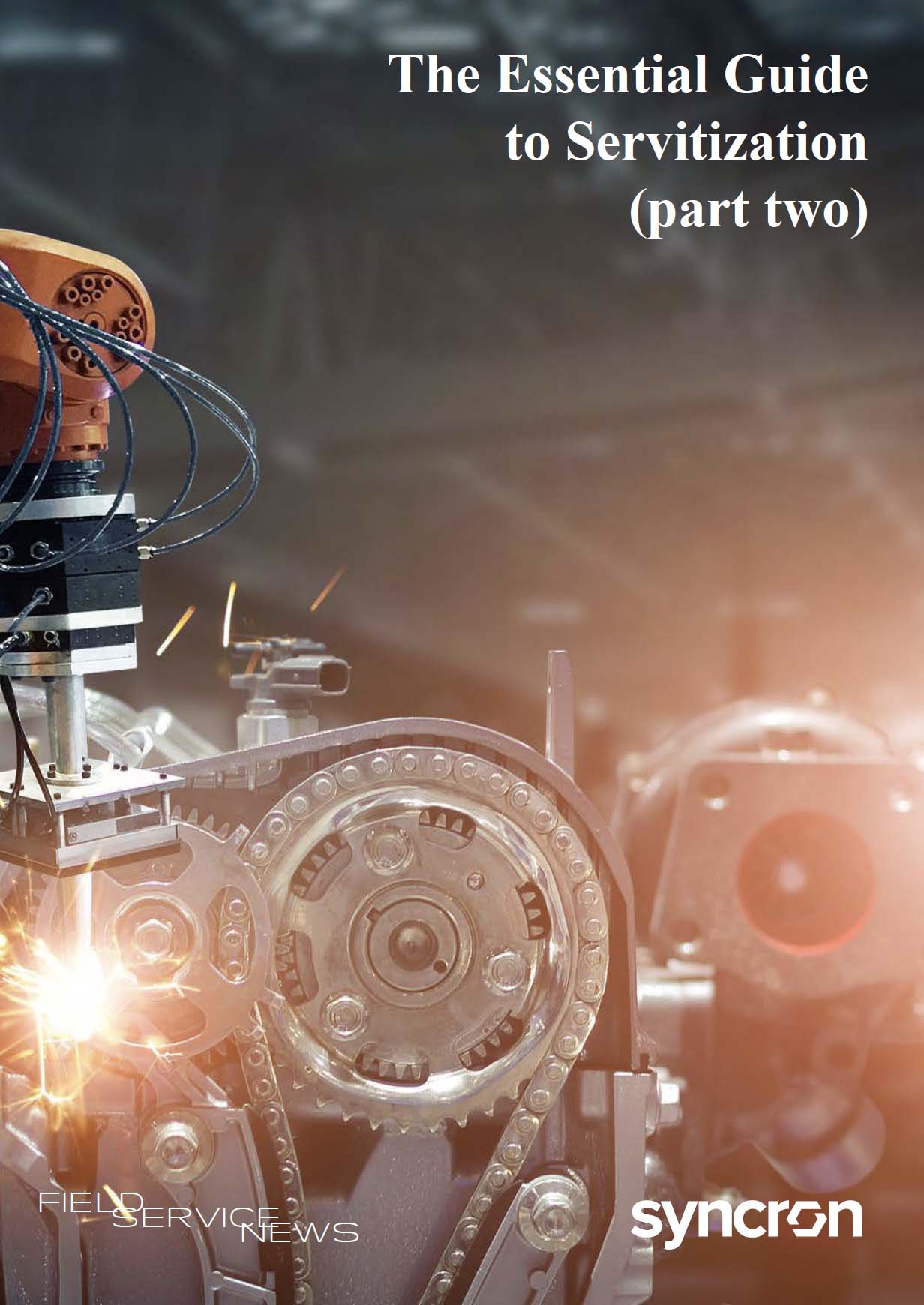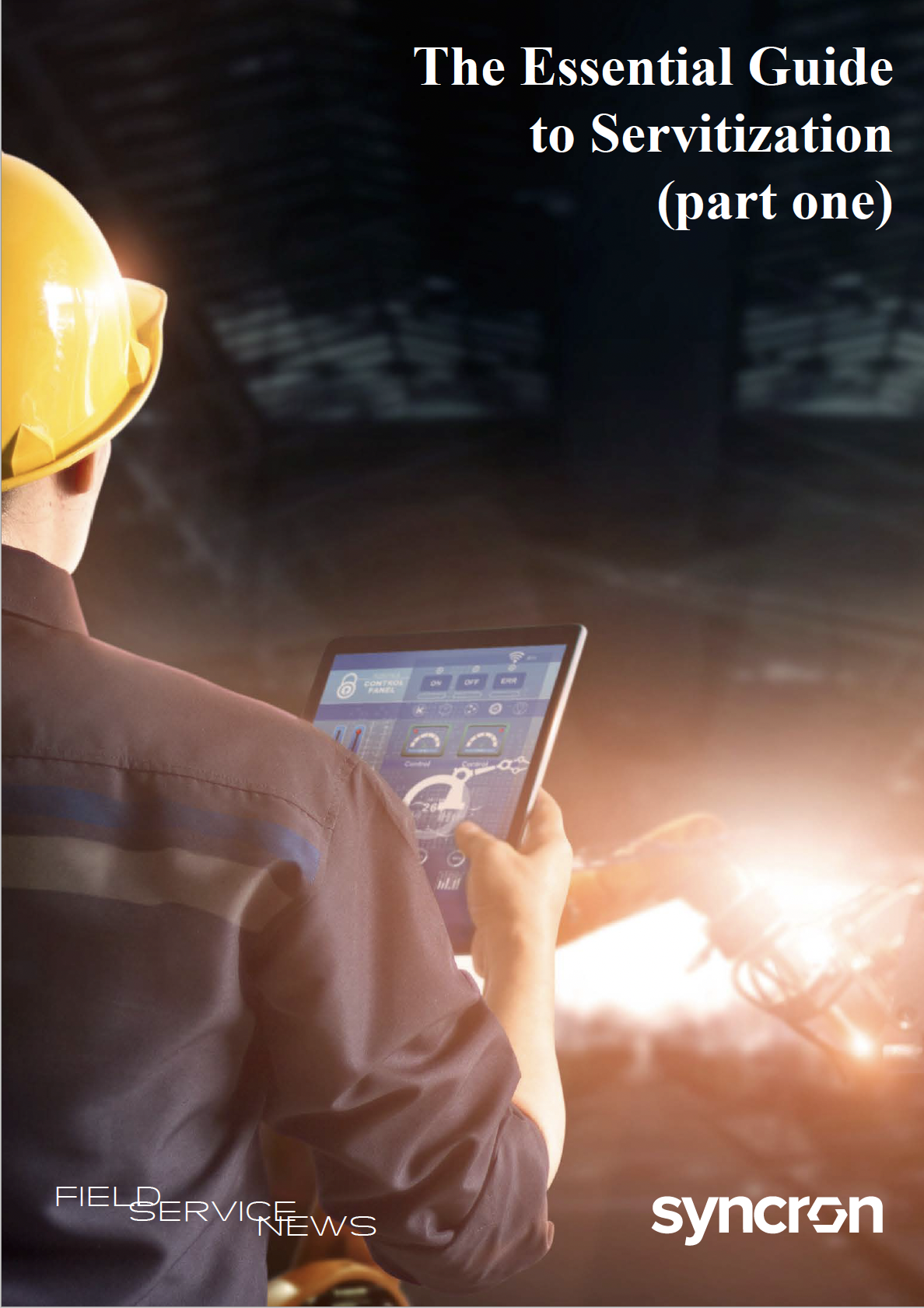Servitization Series: Conclusion and Reflective Points
In this series of articles that are serialised from an exclusive new Field Service News two part white paper co-authored by Kris Oldland and Justin Konopaske, we will explore multiple aspects of the complex discussion of servitization…
In previous articles in this series we have so far explored the concepts discussed in the two-part paper including:
- Definition of servitization for 2023
- Servitization as a spectrum
- orchestration of the developing organizational structure
- How to navigate the transformational change needed for servitization
- The relationship between servitization and digital transformation
- Technology Requirements for Successful Servitization
- Ten Examples of Servitization across diverse industry verticals
Of course, while we have tried to provide the industry’s. most detailed overview of servitization, in the scope of this series, we can still only cover some of the most fundamental aspects of the complex topic of servitization.
However, having done so, let’s reflect on some of the key insights we’ve walked through to give you the opportunity for reflection of how these may align time to reflect on the insights and revelations so you can begin the most important part of the process, applying the learnings from this series into the real-world with the context of your own unique organisation.
So first, let’s review some of the critical takeaways, and after each, we shall offer you some reflective questions for you to consider how these considerations sit with your organization.
Make your processes data-driven and insight-led.
Servitization, as a transformative business model, finds its strength in being insight-led. In a rapidly evolving landscape, customer expectations, market dynamics, and technological advancements are constantly in flux, and relying on data-driven insights becomes imperative.
These insights provide a compass, guiding organizations to make informed decisions, tailor services to individual needs, and stay ahead of emerging trends.
By harnessing the power of insights, businesses can anticipate customer preferences and industry shifts and uncover hidden opportunities for growth. In the servitization journey, insights serve as a beacon, illuminating the path toward customer-centricity, operational excellence, and sustainable success.

 Data usage note: By accessing this content you consent to the contact details submitted when you registered as a subscriber to fieldservicenews.com to be shared with the listed sponsor of this premium content Syncron who may contact you for legitimate business reasons to discuss the content of this briefing report.
Data usage note: By accessing this content you consent to the contact details submitted when you registered as a subscriber to fieldservicenews.com to be shared with the listed sponsor of this premium content Syncron who may contact you for legitimate business reasons to discuss the content of this briefing report.
This content is available for FSN PRO members and also for a limited period for FSN FREE members. Please make sure you are logged in to access this content.
Not yet subscribed? Instantly unlock this content and more on our forever-free subscription tier FSN FREE
"How can your organization leverage data insights to transition from traditional service metrics to outcome-based performance measurement, and what potential challenges might you anticipate in this process?"
Some key areas to consider
Concrete Advantages Realized:
Servitization doesn’t merely represent a transition; it encompasses a collection of tangible gains. Beyond traditional product transactions, it unveils a spectrum of customer-centric services. The results are brought to life through data-led insights: elevated customer satisfaction, bolstered loyalty, and the establishment of sustainable revenue streams.
Operational Excellence:
The focus now shifts to encompass outcome-based services, where operational excellence intersects with strategic ingenuity. This narrative of operational efficiency, financial prudence, and predictive maintenance takes centre stage, all underpinned by the insights gleaned from data-driven analysis, enhancing service quality’s essence.
Conquering Challenges:
A servitization journey will see your organization through a considerable transformation and, of course, will include multiple challenges, but each can be overcome with methodical determination.
However, adapting to cultural shifts, integrating intricate technologies, and harmonizing complex alignments were approached strategically, which has to be an insight-led process.
Reflective questions:
How can your organization leverage data insights to transition from traditional service metrics to outcome-based performance measurement, and what potential challenges might you anticipate in this process?
What strategies could your company adopt to nurture a workforce equipped with technical prowess and customer-focused skills, enabling them to adapt to the dynamic landscape of servitization?
Consider how your organization can balance preserving legacy systems and integrating new technologies to create a harmonious ecosystem that supports the seamless convergence of service and product offerings.
"Consider the long-term sustainability of your technology choices in the realm of servitization. How well are your technological investments equipped to evolve alongside market trends and customer expectations?"
The criticality of technology in establishing servitization:
Central to the transformation of servitization is the role of technology. As organizations shift towards outcome-driven service excellence, technology becomes the pivotal force that supports and guides every step of this transition.
Indeed, technology’s role in servitization cannot be understated; it is the critical element that moves service organizations towards servitization from concept to reality.
Some key areas to consider:
Technology’s Transformational Role:
The journey towards servitization is significantly influenced by technology, which is interwoven into the fabric of such initiatives, transforming concepts into tangible realities. As organizations navigate the path toward outcome-driven service excellence, technology emerges as the linchpin that guides and supports every stage of this journey.
Innovative Synergy:
The convergence of data analytics, IoT, and AI-driven platforms has resulted in a symphony of innovation. These technological components collaboratively empower organizations to make well-informed decisions, achieve operational excellence, and deliver unparalleled customer experiences. This synergy is critical as it propels individual organizations toward success and sets a precedent for industry-wide transformation and adaptability.
Future-Proofing Through Technological Resilience:
As we look ahead, servitization emerges not merely as a momentary phase but as a beacon guiding us towards uncharted realms of potential. Its enduring value lies in its capacity to navigate the currents of a rapidly evolving market and harmonize with customers’ ever-changing desires.
To secure this enduring significance, technology must be forged with resilience, capable of flexing and evolving with the dynamic landscape. This requires strategic foresight in technology selection, ensuring that solutions implemented today are equipped to accommodate the innovations of tomorrow.
The future-proofing of technology, underpinned by continuous adaptation, is not just a prudent measure but a strategic imperative for sustained success within the servitization landscape.
Reflective questions:
Reflect on your organization’s approach to adopting technology in the context of servitization. How central is technology in facilitating the shift towards outcome-driven services? Consider how technology can enhance your service offerings’ decision-making, operational excellence, and customer experiences.
Explore the synergy between data analytics, IoT, and AI-driven platforms in your organization. How are these technological components collaborating to amplify the impact of your servitization efforts? Reflect on how this synergy can transform your organization’s performance and influence the broader industry landscape.
Consider the long-term sustainability of your technology choices in the realm of servitization. How well are your technological investments equipped to evolve alongside market trends and customer expectations? Reflect on the importance of future-proofing technology to ensure your servitization journey remains adaptable and relevant as the business landscape transforms.
"In a rapidly evolving landscape, how can you empower your workforce to become agile skill seekers, ready to adapt to new challenges and embrace continuous learning to thrive in the servitized environment?"
Empowering the Servitization Pioneers: The Human Element
Amidst the technological crescendo and process orchestration, it’s crucial to acknowledge the indispensable role of people in the servitization journey. As organizations navigate the transformational landscape, the human nexus becomes the heart of servitization’s success. This chapter concludes with spotlighting the individuals who carry the torch of change and drive the servitization narrative forward.
Some key areas to consider:
Cultural Architects of Change:
A cultural metamorphosis lies at the core of servitization. The individuals who champion this change are cultural architects, guiding their organizations through the transition from product-centric to customer-centric paradigms. Their ability to inspire, communicate, and drive shifts in mindset forms the bedrock of servitization’s realization.
Agile Skill-Seekers:
The journey towards servitization demands a proficient and agile workforce in adapting to new challenges. Skill seekers embrace continuous learning, actively expanding their technical and customer-facing capabilities. These individuals embody the adaptability required to excel in a servitized landscape.
Innovation Advocates:
Servitization thrives on innovation, and its architects are the individuals who consistently advocate for fresh ideas and creative solutions.
They foster a culture of ideation, where even the most complex challenges are seen as opportunities to innovate, enhance service offerings, and shape the future of the business. Implementing technology and process adjustments hinges on the expertise of change enablers.
These individuals ensure the organization’s smooth transition, minimizing disruption and maximizing the integration of new systems. Their proficiency in change management ensures that the transformation journey is embraced at every level.
Reflective questions:
How can your organization cultivate a culture that champions the shift from product-centric to customer-centric paradigms, enabling the architects of change to drive successful servitization?
In a rapidly evolving landscape, how can you empower your workforce to become agile skill seekers, ready to adapt to new challenges and embrace continuous learning to thrive in the servitized environment?
What strategies can your organization implement to foster a culture of innovation, where individuals become advocates for fresh ideas and creative solutions and see challenges as opportunities to innovate and enhance service offerings?
Final thought:
As we reflect on the transformative journey from products to services, we find that servitization’s true power emanates from the synergy between processes, technology, and people.
Individuals’ collective dedication, adaptability, and innovative spirit shape the symphony of servitization’s triumph. As organizations strive, they are reminded that the human nexus remains the compass guiding them toward the pinnacle of outcome-driven service excellence.
Do you want to know more?
If you want to read more from this paper then you can access it instantly on the button below if you have a sufficient membership. If you don’t have the right membership privileges then you can register on the button below for instant access.
This content is available for FSN PRO members and also for a limited period for FSN FREE members. Please make sure you are logged in to access this content.
Not yet subscribed? Instantly unlock this content and more on our forever-free subscription tier FSN FREE


Data usage note: By accessing this content you consent to the contact details submitted when you registered as a subscriber to fieldservicenews.com to be shared with the listed sponsor of this premium content Syncron who may contact you for legitimate business reasons to discuss the content of this briefing report.


